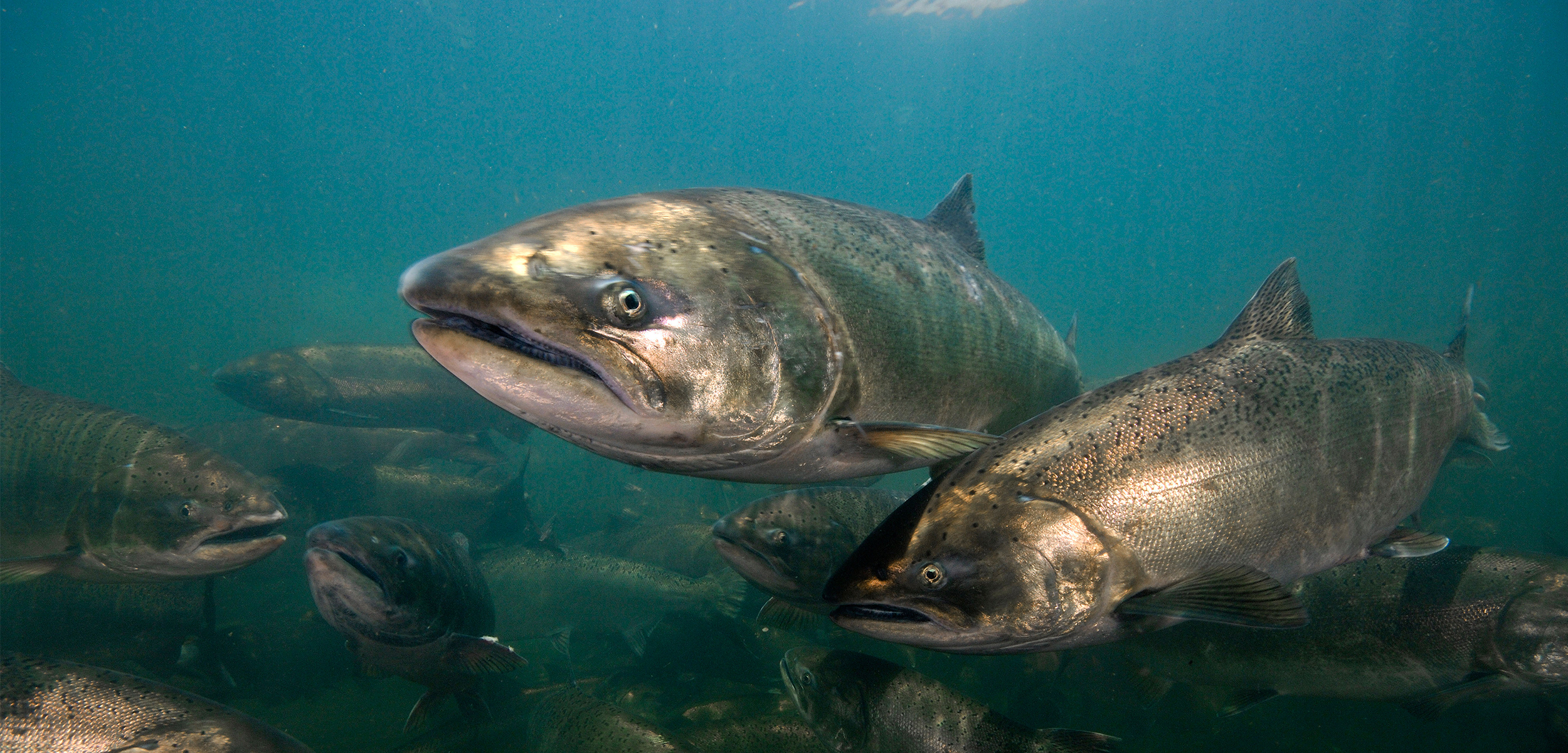Scientists Are Running Out of Salmon to Study
With west coast salmon populations withering, these researchers are heading for the Great Lakes.
Article body copy
For years, Steven Cooke, a biologist at Carleton University in Ottawa, has been traveling to British Columbia to research Pacific salmon migrations. But on the west coast, salmon populations are in dire straits. Several of the populations Cooke studies, including those in the Fraser River, have crashed to the point that even taking a small number of fish for research would be more than they can afford to lose. “We’re at the point with some populations where we have to be hands off,” says Cooke. “We don’t want to study them to extinction.”
Through years of precipitous declines, Cooke has found it increasingly difficult to study the fish in their native habitat. Now, he’s been all but forced to shift his team’s focus thousands of kilometers east, to Ontario’s Great Lakes.
More and more frequently, says Cooke, salmon numbers have been so low that his research permits have been canceled by the federal government or shifted to other watersheds at the last minute. A sudden move can be just as difficult as a cancellation, since the research team does not have any experience, contacts with local Indigenous communities, or even hotel reservations in the new location. This is particularly disruptive for his students, who may only have one or two field seasons in which to collect the data needed for their projects.
“If you’re a master’s student or [postdoctoral researcher], having a year where you plan to do research and then there are no fish is a big problem,” says Cooke. “It’s gotten to the point where it’s not worth it. There’s too much uncertainty.”
Jason Hwang, vice president of the conservation organization Pacific Salmon Foundation, says that marine heatwaves, droughts, wildfires, and habitat loss from urban and agricultural development all make life difficult for west coast salmon. “It’s always a complicated story, and not every population is doing poorly, but the general trend is one of decline,” he says.
To avoid the uncertainty on the west coast, Cooke has resorted to studying the migrations of Pacific salmon in southern Ontario. The Great Lakes used to be home to a native population of Atlantic salmon, but it was extirpated more than 100 years ago. In the 1960s, however, hatchery-raised Pacific salmon, mostly chinook with some coho, were introduced to help control invasive species such as alewife. To this day, the lakes are stocked with tens of thousands of Pacific salmon annually to support a thriving sport fishery.
Trevor Pitcher, a biologist at the University of Windsor in Ontario, has studied Pacific salmon in the Great Lakes for the past 20 years, mainly in the Credit River in Mississauga. He says there is almost no distinguishable difference between the fish from the west coast and those in the lakes. “The fish are the same,” he says. “Same size, same behavior; they just don’t migrate as far, and they use the lake instead of the ocean.”
Pitcher’s work focuses on improving the fitness of hatchery-raised fish, which can benefit hatchery and stocking programs in Ontario and on the west coast. He says the Great Lakes fish, which are adapted to living their whole lives in fresh water, could also be ideal candidates for terrestrial aquaculture programs that grow fish in tanks on land.
Cooke says the downside of working with the Great Lakes salmon is that they don’t have the same specific adaptations to the local habitat as fish on the west coast. For instance, he can’t address questions about the population-level variation in traits like heat tolerance. And the migrations of Great Lakes fish pale in comparison* to the 600-to-900-kilometer migrations salmon undertake in the Fraser River. “The distance and difficulty is just a fraction of what they have to do in the mighty Fraser,” he says.
But from Cooke’s perspective, the disadvantages are balanced by the fact that the Great Lakes provide a reliable supply of fish to study. “It gives us the certainty that we can pull the research off without putting the salmon population or student projects at risk, and without wasting valuable research dollars.” He and his colleagues will continue to work in British Columbia when they can, but Cooke says they will be more tactical and focus on populations that are less at risk.
Hopefully, says Cooke, the research done in the Great Lakes can lead to insights that can help Pacific salmon recover in their native habitat. “The salmon are resilient,” says Hwang. “If we give them a chance, they have a powerful potential to recover.”
*Correction: This sentence has been updated for clarity.

